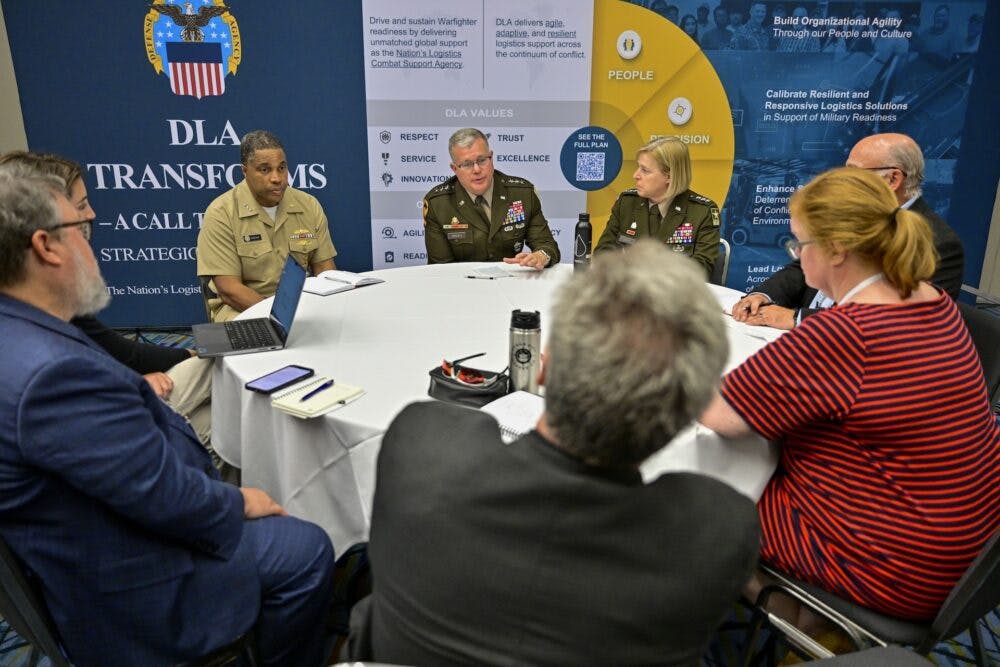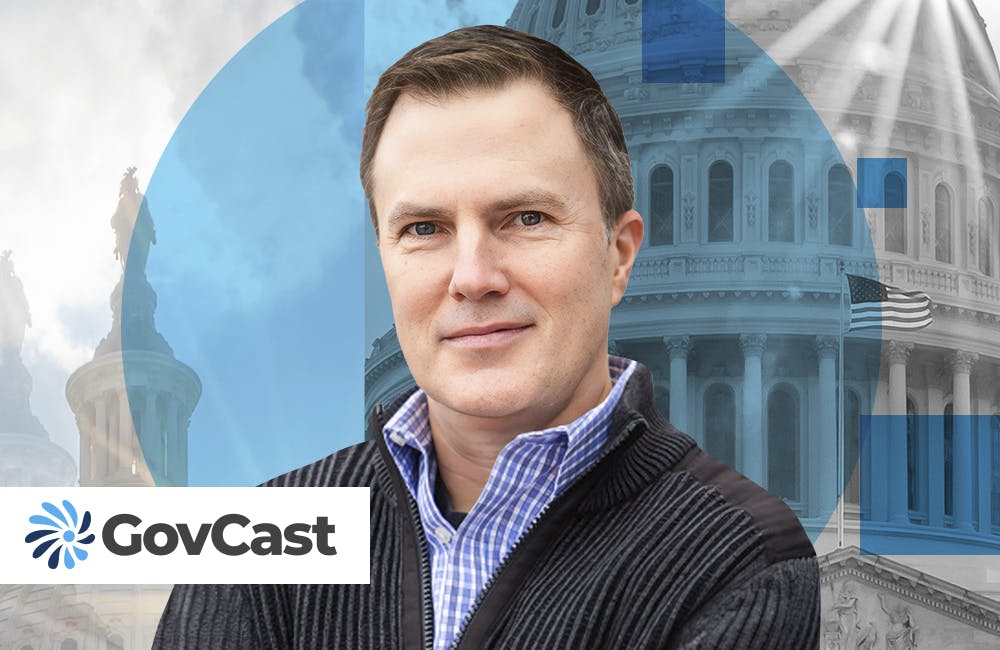Health Leaders Target Data Exchange to Improve Patient Care
Health IT leaders from SSA, FEHRM and VA discuss challenges and next steps for cross-government health data interoperability.

Data interoperability is a key component to effectively implementing solutions such as the joint federal electronic health record and making faster, more accurate decisions to improve patient care. The Federal Electronic Health Record Modernization (FEHRM) Office, Department of Veterans Affairs, Social Security Administration (SSA) and the Centers for Medicare & Medicaid Services (CMS) are looking at new ways to standardize data and processes through key components including governance and data management.
This is especially important with the massive cross-government initiative to move to a single, common electronic health record.
“We’re trying to make sure that we do deliver, and we work toward some standardized practices within the department,” VA Deputy CIO of the Electronic Health Record Modernization Integration Office (EHRM-IO) Laura Prietula said on a panel at the HIMSS conference in Chicago Tuesday. “How do we bring it back to our core so that we’re not delivering and deploying 172 different versions of the product again? … That way it will make it a repeatable process, and people can now expect what it is that you’re going to get at your medical center.”
VA is building a longitudinal platform to enable the agency to consume, exchange and use data at any time in the point of care.
“We want to make sure that your data is accessible, usable, computable, and it helps and does something,” Amanda Cournoyer, VA’s director of data and interoperability at EHRM-IO, said at the conference. “We’re moving to all standardized. We want FHIR APIs, we want open access, we want to be able to talk and exchange.”
CMS is improving interoperability by increasing and advancing health care data exchange functionality to better inform decision-making for patients and providers, support and improve patient care, and reduce the administrative burden on providers and payers.
“CMS is continuing to advance our goals to make health care data flow more freely and securely among payers, providers and patients by continuing to lay foundation to foster a more connected, modern health care system,” a CMS spokesperson told GovCIO Media & Research. “We are working toward this goal.”
Standardizing data into a computable format is key to enabling data-sharing and using other emerging technology tools such as natural language processing (NLP).
“Just having the data is not all the same. It’s not created equal,” FEHRM’s Acting Technical Director and Solutions Integration Director Lance Scott said at the HIMSS conference Tuesday.
SSA has around one million pending disability cases at the initial claims level. The agency’s Assistant Deputy Commissioner in the Office of Analytics, Review and Oversight Joe Lopez is investigating better, faster ways to gather and analyze data to improve decision-making on disability cases.
“Health information technology is one of our solutions that we need to leverage to make sure that we make decisions as quickly as possible… we have to look for every efficiency when we have health IT, so we can quickly request the medical evidence and receive it back within minutes or seconds.,” Lopez said. “The Office of Analytics is looking to gather all the data that SSA has to make data-driven decisions. You can’t make those decisions if the data is stored in all kinds of different locations, where you don’t have access.”
SSA only receives around 14% of its structured evidence electronically. SSA is leaning on leadership buy-in and partnerships to collaborate with EHR agencies and receive information quickly.
“We as an agency have to ensure that our leadership buys into this idea that we have to do everything that we can to work with our partners across the electronic health record organizations to receive that evidence electronically, so that we can use automation to go through it, to sift through it and call out the information that’s important,” Lopez said.
Looking ahead, health agencies are focusing on improving patient experience through new technology tools. The FEHRM recently launched a new pilot focusing on NLP. Scott said the Longitudinal Natural Language Processing Pilot will enable users to conduct an NLP search on the data, so when the patient comes into the clinician’s office, the clinician already has all the documents related to that issue ready.
“It makes the patient experience that much better,” Scott said.
This is a carousel with manually rotating slides. Use Next and Previous buttons to navigate or jump to a slide with the slide dots
-

Data Transparency Essential to Government Reform, Rep. Sessions Says
Co-Chair of the Congressional DOGE Caucus Rep. Pete Sessions calls for data sharing and partnerships to reduce waste and improve efficiency.
5m read -

Trump Executive Order Boosts HBCUs Role in Building Federal Tech Workforce
The executive order empowers HBCUs to develop tech talent pipelines and expand access to federal workforce opportunities.
3m read -

DOD Can No Longer Assume Superiority in Digital Warfare, Officials Warn
The DOD must make concerted efforts to address cyber vulnerabilities to maintain the tactical edge, military leaders said at HammerCon 2025.
4m read -

DHA CDAO Spearheads Master Data Catalog to Boost Transparency
Jesus Caban plans to boost DHA's data maturity through a new master data catalog, governance frameworks and inventory of tech tools.
5m read -

IHS Prepares to Deploy PATH EHR at Pilot Sites in 2026
IHS targets PATH EHR pilot in 2026, emphasizing governance, collaboration and interoperability as key pillars of the modernization strategy.
4m read -

IRS Makes Direct File Code Public as Lawmakers Debate Program’s Fate
The agency sees the Direct File source code as beneficial to government digital services despite what happens with it in proposed budgets.
5m read -

A Look at Federal Zero Trust Transformation
Recent developments from CISA and DOD show how government is advancing zero trust quickly.
20m read -

FEHRM CTO Targets Two-Year Cloud Migration for Federal EHR
Lance Scott touts new EHR tech advancements, including cloud migration, expanded data exchange and AI integration to improve care delivery.
4m read -

New Army Acquisition Plan Cites Autonomy, Predictive Analytics
Officials outline how the Army Transformation Initiative signals a broader shift toward efficiency with tech and acquisition reform.
4m read -

DOE National Labs Launch New AI Tools for Operational Efficiency
The Energy Department's National Laboratories are using AI to increase operational efficiency and drive research efforts forward.
3m read -

Trump Taps Maj. Gen. John Bartrum to Lead VHA
Nominated for VA's top health role, Bartrum brings over four decades of military and public service to the agency.
3m read -

Human-AI Collaboration is Key to Secure Government Systems
Former CIA security chief emphasizes training and international standards for effective AI implementation.
23m watch
















